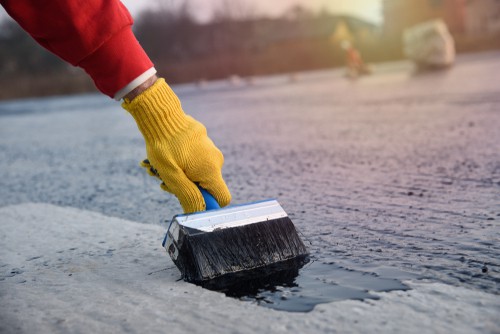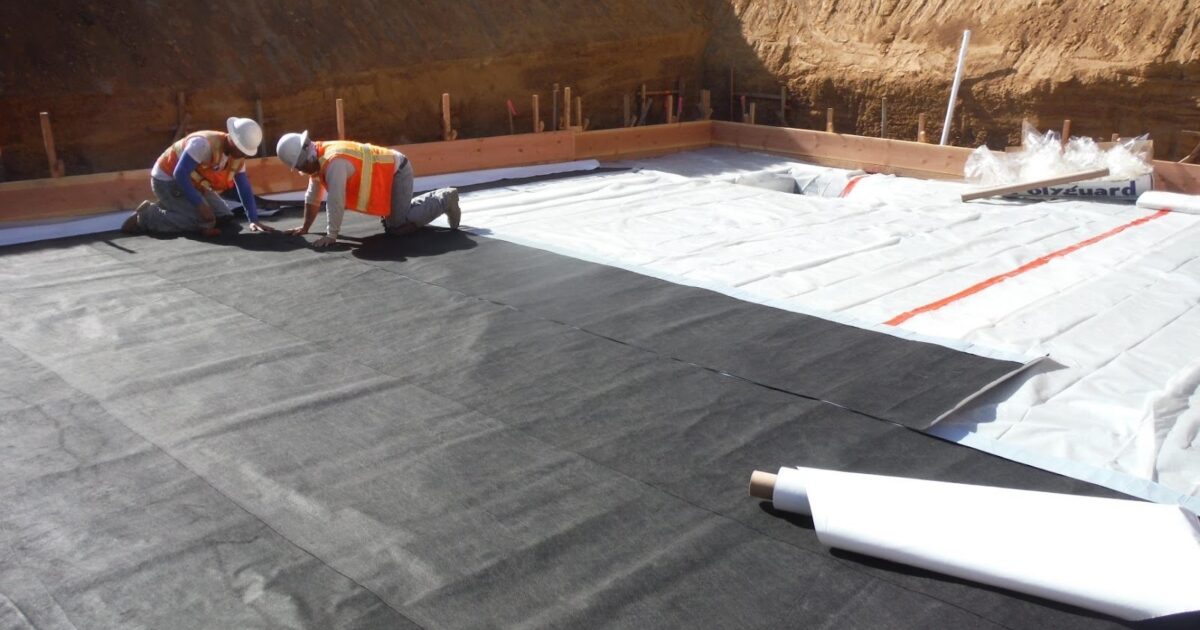Exactly How Waterproofing Works: A Thorough Check Out Strategies and Technologies
Waterproofing is essential for safeguarding structures from moisture-related damages. It involves numerous techniques and innovations that produce barriers against water breach. Standard approaches, such as compacted clay, coexist with modern-day developments like liquid-applied membrane layers. Understanding the subtleties of these techniques is vital for reliable application. Nevertheless, the effectiveness of any type of waterproofing remedy pivots not only on the techniques utilized however also on recurring maintenance and evaluation. What are the key aspects that influence long-lasting efficiency?
Recognizing the Fundamentals of Waterproofing
Waterproofing is an important procedure that safeguards frameworks from water invasion, which can lead to substantial damages gradually. This approach entails the application of various materials and techniques created to develop an obstacle versus wetness. The main objective is to stop water from passing through surfaces, which can create deterioration, mold and mildew growth, and structural instability.Various aspects affect the option of waterproofing method, including the type of structure, its place, and environmental conditions. Understanding the physics of water motion and the buildings of various products is crucial in choosing an efficient waterproofing solution.Effective waterproofing not only safeguards buildings however also enhances their longevity and integrity. Normally, it is incorporated into the style stage of building and construction to guarantee complete defense. As recognition of water-related concerns expands, the importance of understanding waterproofing principles ends up being progressively clear to architects, building contractors, and homeowner alike.
Standard Waterproofing Methods
Conventional waterproofing techniques have been made use of for centuries, counting on tried and true methods and materials to safeguard structures from water damages. Among the earliest techniques entails using clay, which, when compressed, produces an all-natural barrier against moisture. Furthermore, asphalt, a sticky, black product stemmed from oil, has been employed for its waterproof properties, usually related to roof coverings and foundations.Another method entails the application of lime-based plasters, which offer a breathable layer that permits moisture to leave while stopping water ingress. Thatch roofing, a traditional method still seen in some societies, uses outstanding waterproofing as a result of its tightly packed straw layers.Moreover, making use of stone and block has projected, as these products are naturally immune to water when appropriately installed. On the whole, traditional waterproofing approaches highlight the importance of picking suitable products and building practices to boost resilience against water intrusion.
Modern Waterproofing Technologies
Improvements in modern-day waterproofing technologies have actually revolutionized the means structures are secured from water damage. Ingenious approaches such as liquid-applied membrane layers and innovative sealants have enhanced the effectiveness and adaptability of waterproofing services. These innovations permit seamless application, lowering the risk of leakages and making certain complete coverage over intricate surfaces.Moreover, the integration of wise modern technologies, such as dampness sensors and automated tracking systems, makes it possible for real-time evaluation of waterproofing performance. This positive technique facilitates timely maintenance and minimizes long-lasting fixing costs.Additionally, developments in spray-applied coverings offer fast application and outstanding adhesion, adapting to various substratums while supplying robust protection. Techniques like polymer-modified systems better boost versatility and sturdiness, making them ideal for varied settings. In general, contemporary waterproofing innovations not just alleviate water breach yet additionally add to the longevity and sustainability of frameworks, noting a substantial change in the sector.
Products Utilized in Waterproofing
The efficiency of waterproofing remedies greatly depends on the materials utilized in their application. Various products are employed to create obstacles versus water ingress, each with unique properties matched for various atmospheres. Generally used materials consist of membranes, coverings, go to this site and sealants.Liquid-applied membranes, frequently made from polyurethane or acrylic, create a seamless obstacle that adjusts to complex surfaces. Sheet membrane layers, commonly created from rubber or thermoplastic, offer longevity and are excellent for larger locations. In addition, cementitious waterproofing products, composed of cementitious compounds, offer excellent attachment and flexibility.Sealants made from silicone or polyurethane are necessary for joints and seams, guaranteeing complete protection. Additionally, innovative products, such as geo-composite membranes, integrate multiple functions, improving performance. Generally, the option of waterproofing products is vital in accomplishing long-lasting and efficient water resistance, tailored to certain project demands and ecological conditions.
Usual Applications of Waterproofing
Waterproofing plays a crucial duty in various markets, guaranteeing the durability and honesty of structures. Common applications consist of household solutions that protect homes, commercial infrastructure that safeguards businesses, and commercial settings that need durable defense versus moisture. Comprehending these applications highlights the relevance of waterproofing in preserving both safety and security and functionality throughout different settings.
Residential Waterproofing Solutions
Many house owners face difficulties with dampness breach, making you can try this out reliable residential waterproofing solutions important. Different techniques exist to resolve this problem, consisting of exterior and interior waterproofing systems. Interior options typically entail the application of sealers and finishes to basement walls, which aid protect against water seepage. Outside techniques normally consist of the installation of water drainage systems and water-proof membrane layers that draw away water away from the foundation.Additionally, home owners might consider sump pumps to get rid of water build-up and dehumidifiers to regulate humidity levels. Correct grading and making use of rain gutters also play an important duty in managing water flow around the home. By executing these methods, homeowners can greatly minimize the risk of water damage and mold and mildew growth, making sure a dry and secure living environment.

Commercial Facilities Defense
Reliable waterproofing options play an essential role in the protection of commercial infrastructure. Water Solutions Omaha. These techniques are essential for guarding structures, vehicle parking structures, and bridges from water damages, which can jeopardize structural honesty and cause pricey repair work. Typical applications include the installment of membrane layers, coverings, and sealants that produce barriers against dampness seepage. Locations such as basements, roofing systems, and exterior wall surfaces are often focused on to ensure durability and sturdiness. Furthermore, waterproofing systems can enhance energy performance by stopping water-related problems that may bring about mold development and damage. By carrying out robust waterproofing steps, residential property owners can shield their investments and keep operational effectiveness, inevitably contributing to the general sustainability of industrial centers
Industrial Applications Summary
While different fields face special challenges, the need for trustworthy waterproofing remedies remains a constant in industrial applications. Industries such as manufacturing, building and construction, and energy frequently come across atmospheres where moisture direct exposure can jeopardize structural stability and operational effectiveness. In producing facilities, waterproofing is crucial for protecting equipment and products from water damage. In building, it safeguards foundations and basements versus groundwater seepage. The energy industry depends on waterproofing for the security of devices in hydroelectric plants and offshore structures. Additionally, food processing industries make use of waterproofing to ensure health and compliance with safety and security requirements. In general, reliable waterproofing options are necessary for boosting sturdiness, safety, and productivity across numerous industrial setups.
Upkeep and Durability of Waterproofing Solutions
Although waterproofing services are developed to offer lasting defense versus wetness intrusion, routine maintenance is important to assure their performance and long life - Basement waterproofing Omaha. Routine examinations play a substantial function in determining possible issues such as fractures, peeling off, or signs of water damage. Resolving these troubles quickly This Site can prevent additional deterioration and expensive repairs.Additionally, cleansing the surface of waterproof locations helps get rid of dirt and particles that can jeopardize the stability of the waterproofing obstacle. It's additionally advisable to reapply protective layers or sealants as suggested by suppliers to maintain optimal efficiency. Environmental elements, such as UV exposure and severe climate condition, can influence the lifespan of waterproofing materials, making regular evaluation crucial
Frequently Asked Questions
Can Waterproofing Be Applied in Winter?
The concern of applying waterproofing in chilly weather condition increases issues about adhesion and curing. Several items might not perform at their best in reduced temperature levels, demanding cautious choice and factor to consider of specific guidelines for effective application.
How Long Does Waterproofing Normally Last?
The period of waterproofing performance differs based on materials and ecological variables. Usually, it can last from five to 10 years, but normal upkeep and assessments are necessary to ensure peak performance and long life.
Is DIY Waterproofing Effective and Safe?
The effectiveness and security of do it yourself waterproofing depend on various variables, including worldly quality and application method. While some individuals accomplish adequate outcomes, others may encounter issues that endanger long-lasting security and structural honesty.
What Are the Indicators of Failing Waterproofing?
Indications of stopping working waterproofing include visible water spots, peeling off paint, mold and mildew growth, musty smells, and moisture in walls or ceilings - Foundation waterproofing Omaha. These signs recommend jeopardized obstacles, requiring prompt examination and prospective removal to stop further damage
How Do I Choose the Right Waterproofing Contractor?
